You’ve probably managed a pay-per-click campaign that didn’t work.
It happens.
Sometimes marketing campaigns don’t work because your idea was 💩.
But most of the time, it’s because you went for the gold mine instead of the trail of nuggets that lead there.
The micro conversions were missing. 👈 And you need those to execute a solid campaign.
Why?
Because micro conversions point to where the problem is in your conversion funnel 😄
You can measure all the micro conversions that lead up to your big conversion (the macro conversion).
Fix those problems and you get closer to the end goal conversion.
Let’s dig into the benefits of micro conversions with some examples. Then let’s talk about how to track your micro conversions and tweak them to push your customers through your funnel to the end.
Get brand new conversion strategies straight to your inbox every week. 23,739 people already are!
What is a micro conversion?
Micro-conversions are little conversions.
They are the tiny steps a website visitor takes on their way to the ultimate conversion (the macro conversion), which is your primary conversion goal.
Though micro conversions can’t take full credit for the eventual big conversion (or the resulting conversion rate), they do indicate that your sales funnel works.
Little process milestones contribute to the big win.
Examples of micro conversions
If micro conversions are the smaller engagements that move a visitor toward the macro conversion (which might be filling out a lead gen form on a landing page, or making a sale on an eCommerce site), what are some examples of those incremental gains?
Well, off the top of my head...
- Email newsletter sign up (subscriptions)
- Watching a product video (views and length of view)
- Registering for a webinar
- Time on site
- Number of pages per visit (page views)
- White paper/guide download
- Scroll maps
- Click/heat maps
- Filling out some of the form fields
- Adding something to the shopping cart
- Checkout page process fallout, cart abandoners
- Sharing a blog article on social
- Comments on that article
- Average read percentage
- Downloading an ebook or guide
- Clicking internal links
These types of micro conversions connect with your prospects on lower levels. There isn’t a lot of risk associated with them. That comes later at the macro conversion, which is more about free trials, consultations, customer acquisition, and revenue—the purpose of your landing page.
What are the benefits of micro conversions?
People don’t generally stumble on your site and click the Buy Now button moments later. They follow an anticipated customer journey.
The benefit of a micro conversion is that it warms up your customer to the idea of converting on a secondary action, and then a tertiary action, until they get to the final conversion action.
Micro conversions don’t ask a lot from a potential customer. They only ask that the new user shows interest in your brand.
Micro conversions are more about interacting with your site and navigating through it. As you look at the analytics around those micro conversions, you see which ones are popular and which ones don’t get any love.
You can focus on the strong micro conversions because now you know more about your target visitors’ behavior. And you can use that behavior to make better campaigns that get to future macro conversions faster.
These are the parts that many advertisers aren’t paying attention to, but will clearly show you why and where the conversion failed.
For example, say someone lands on one of your blog articles from the Google SERP (search engine results page). They love the article. They share it with coworkers (that’s the first micro conversion) and then they sign up for your e-newsletter so they’ll know when you write more articles (second micro conversion).
Nothing was purchased there, but a lot happened psychologically in the mind of the person who read, shared, and signed up.
Aaaand, when they do decide to buy your stuff (if that’s your main conversion goal), they’re more likely to become long-term brand advocates because they didn’t buy on a whim; they built up to it by engaging in preliminary little things that build trust.
All the smaller things they enjoyed on the way to converting strengthened their decision.
They grew to like your company over time. They got cozy with your content. They appreciated the downloadables. And they eventually saw you as a thought leader.
So keep this in mind:
Test driving before buying creates familiarity.
All those micro conversions put them in the driver’s seat. When they bought, they did so because they felt in control of their buying decision.
Also keep this in mind:
Your series of micro conversions are in succession.
Before someone fills out your form fields, you anticipate that they’ll have to spend at least 20 seconds on your landing page (on average). That means time on site is the micro conversion that comes before filling out form fields.
Knowing the order of your micro conversions shows you where the bottlenecks are and helps you figure out where to focus your time and optimization efforts.
They’re correlated to each other and directly impact each other.
The important part of tracking these micro conversions is that you can act on them.
At KlientBoost, we know that people spend a certain amount of time on our site before they enter our 4-step conversion funnel.
Once they enter, then we know that each of our micro conversion steps precedes the next. So, if we have a bottleneck, we know where to focus our efforts to get higher conversion rate optimizations.
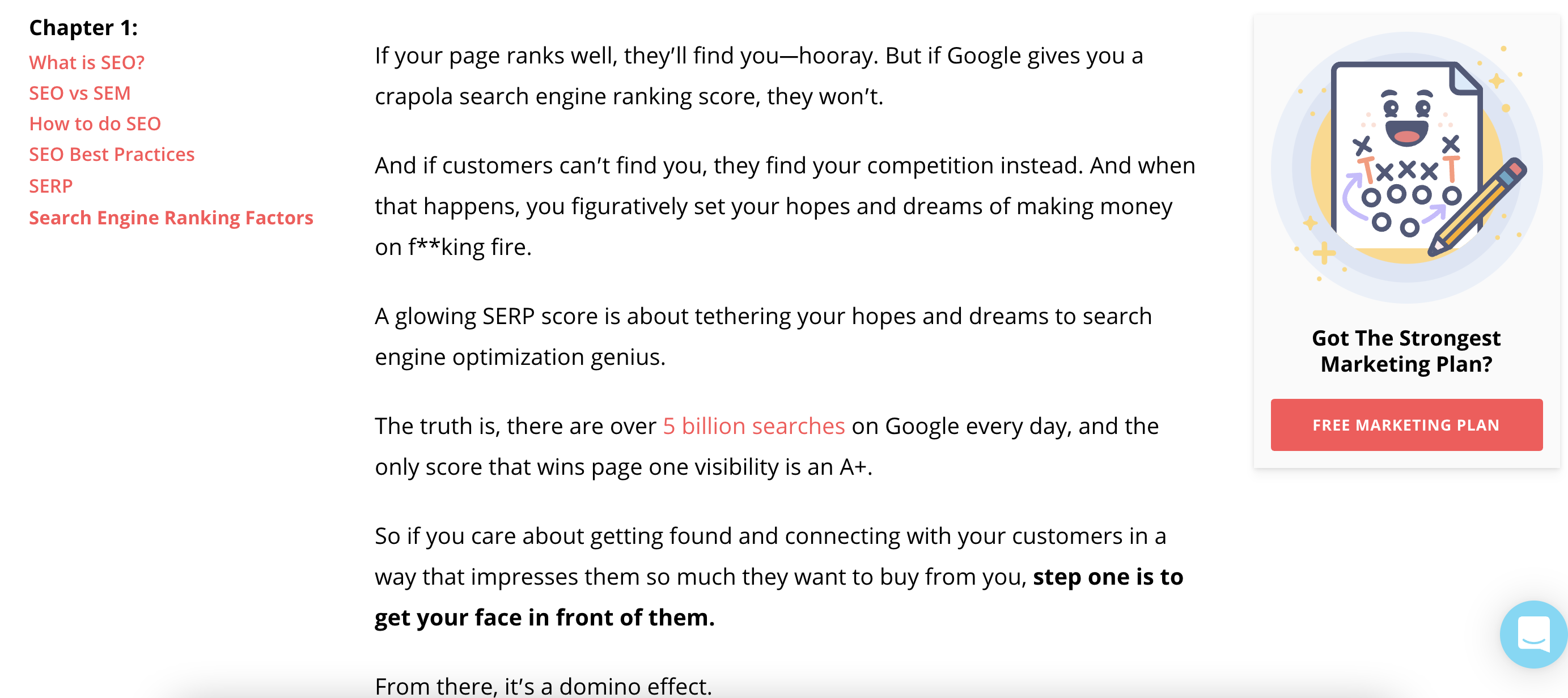
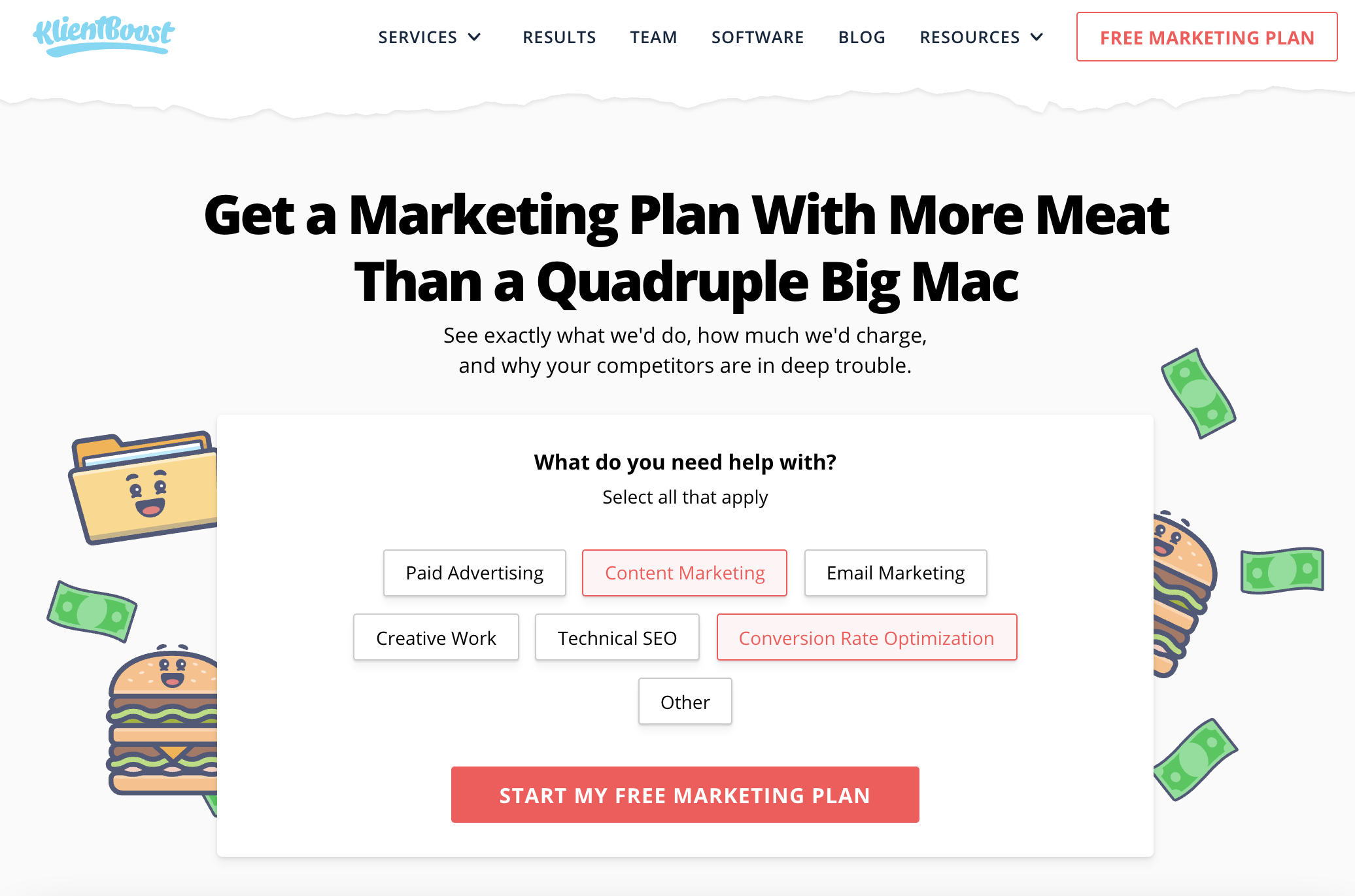
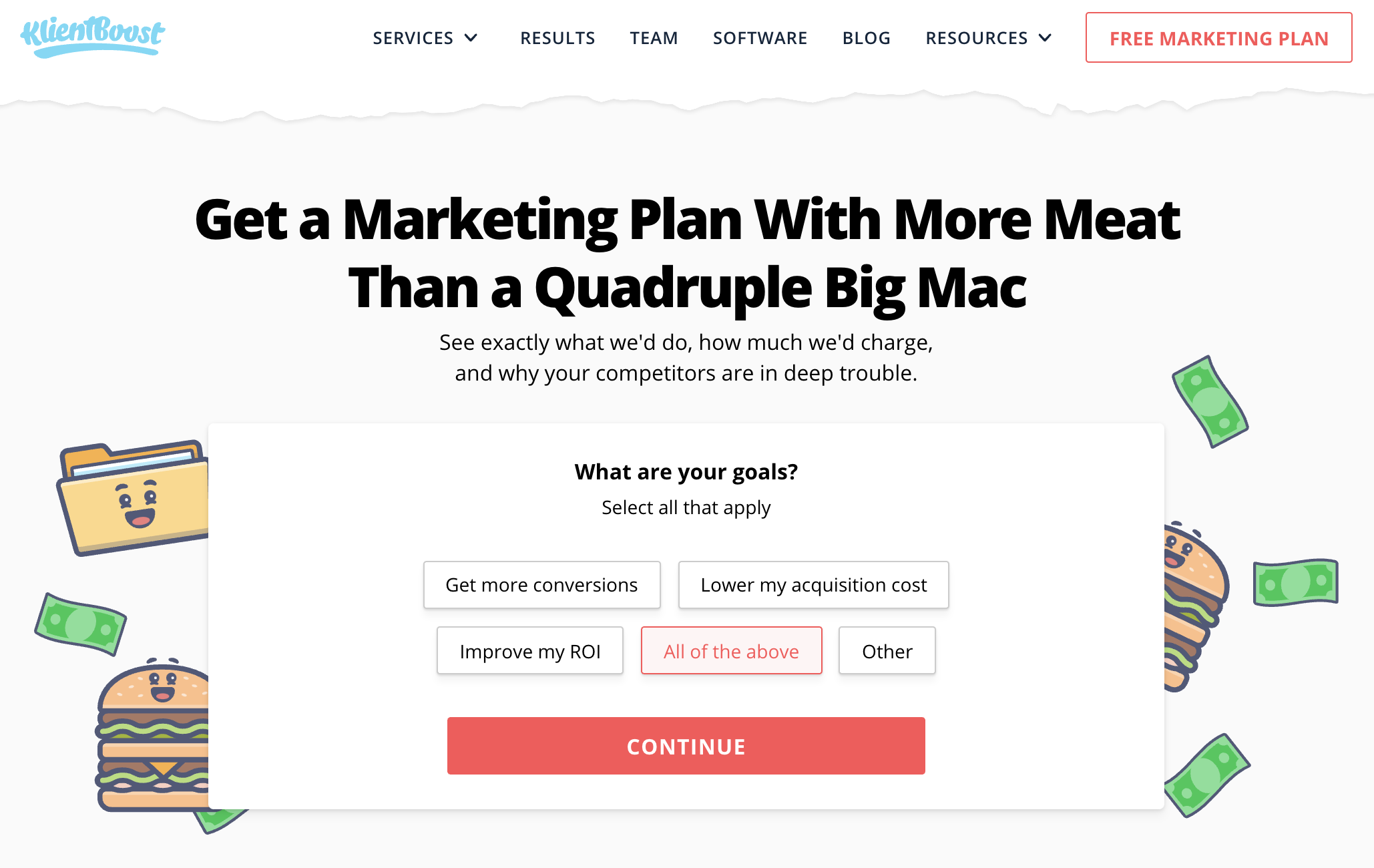
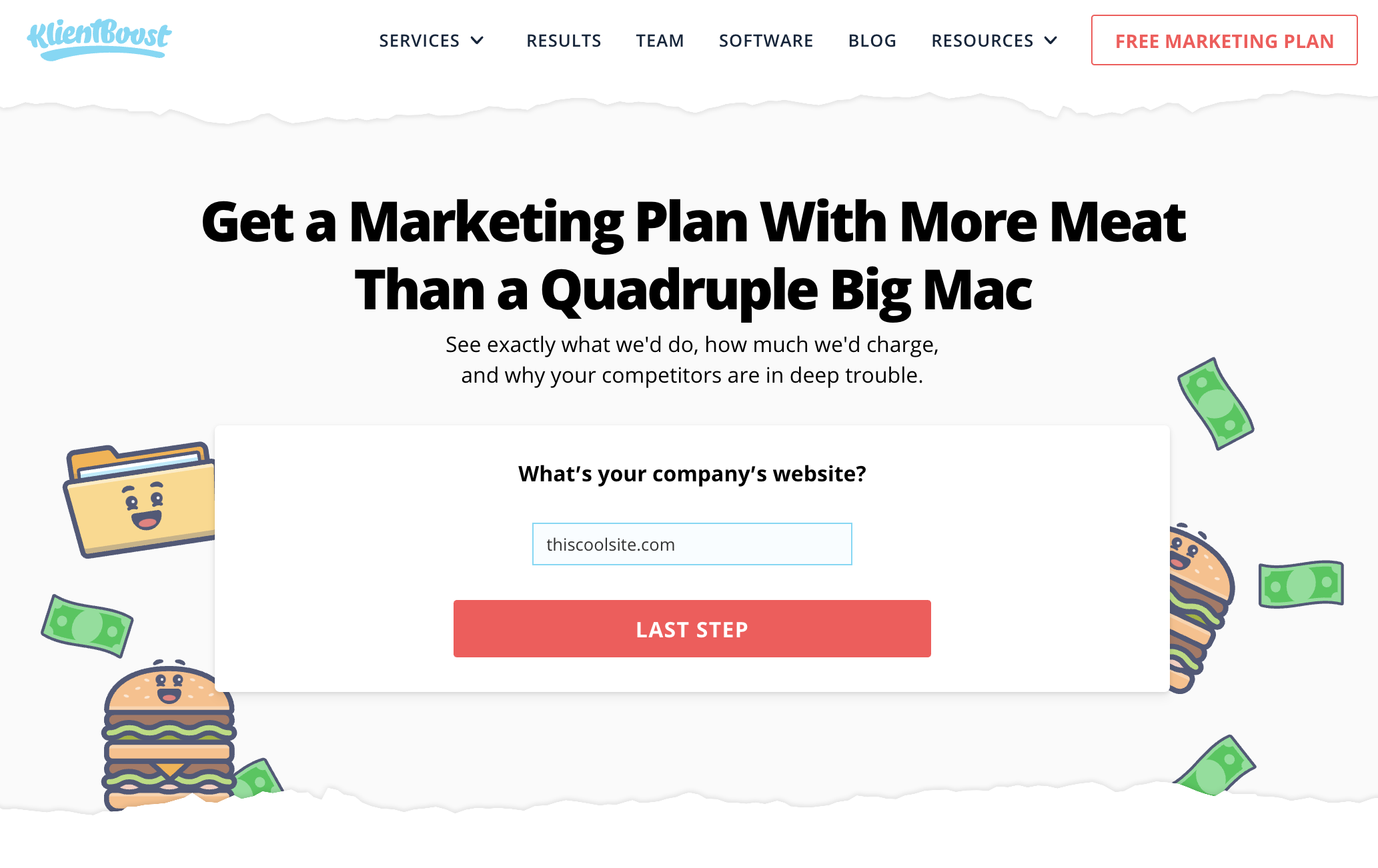
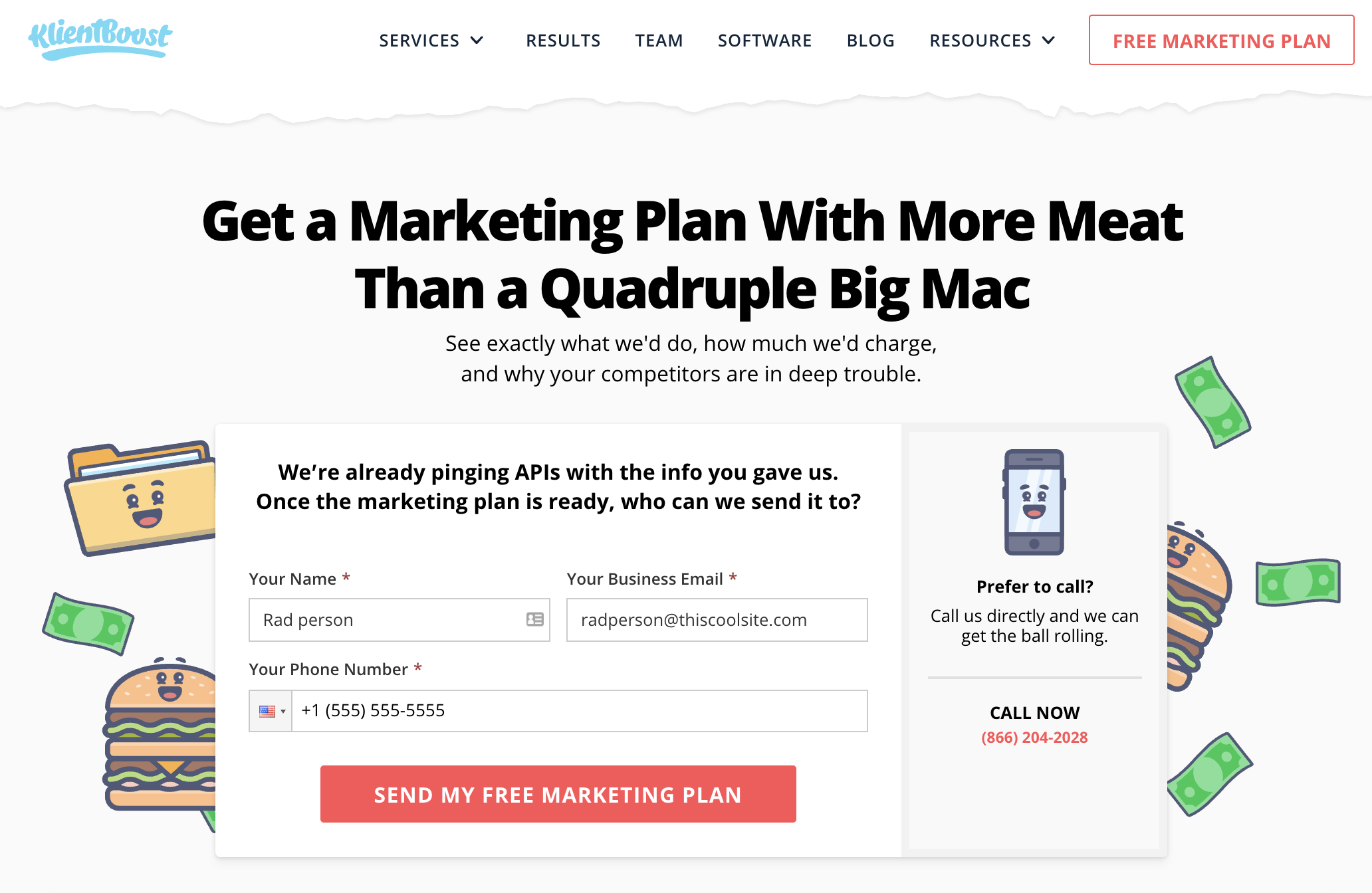
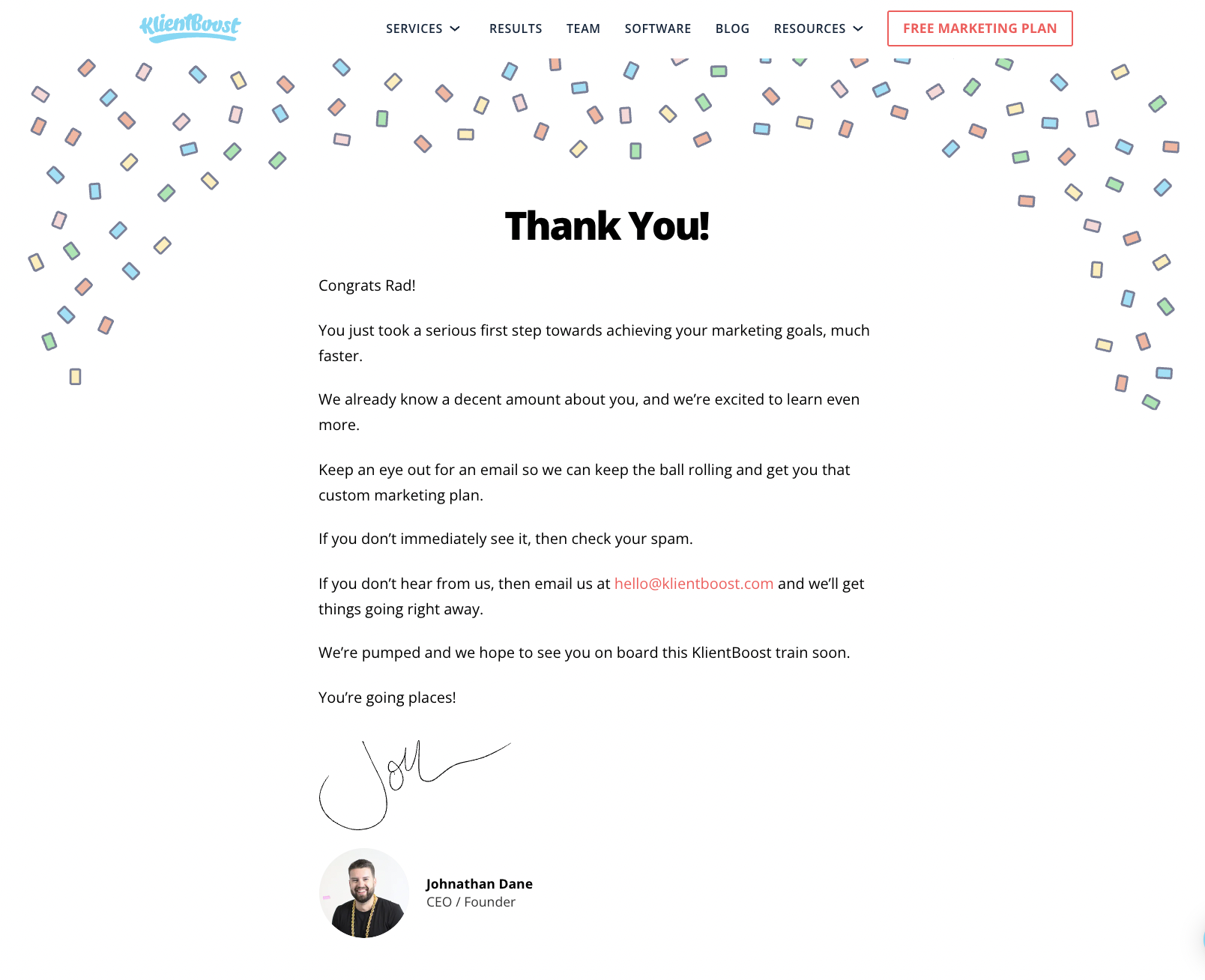
They were curious about the free marketing plan (lead magnet). They didn’t have any problem describing their pain points. And they didn’t have a problem describing their goals.
They’re feeling pretty good about how things are going.
The company website? Fine. Easy. Then the final step just makes sense. How will we know where to send their marketing plan without some contact information?
At this point they want to see what we’ve come up with.
They were digitally chatting with us for a minute and the last step feels more like “catch up with you later” 😎 than “don’t spam me, you assh*le.” 🤬
How to track micro conversions
Once you’ve identified your micro conversions, you should know how to track them.
Time on site
In a typical Google Ads or Facebook Ads account, the first micro conversion we track is keyword/audience level time on site.
Link your Google Analytics account to your Google Ads account and you can break down the campaign-level and keyword-level average session duration (you just have to activate the Google Analytics columns).

As you can see in the above example, the bottom campaign should be paused immediately since those site visitors spend 83% less time on site compared to the campaign above (which is also getting conversions).
In this specific situation, don’t worry about your landing page or ad copy. Focus on the type of traffic you’re generating.
The campaign above is now your micro conversion benchmark. It’s showing that 91 seconds is the average session duration to complete a conversion.
You might be able to lower that time amount, but you should shoot for all other campaigns to be in a similar range—at least—before you can expect a macro conversion to happen.
Pages per visit
Are you running an eCommerce website that requires multiple page visits before the end conversion happens? Maybe you have a simple lead gen goal from sending traffic to your website?
The Google Analytics metric of Pages/session will give you another micro conversion indicator of quality traffic.

If visitors are clicking around to learn more, there’s a good chance they’re engaged. And if they’re engaged, there’s a good chance they’ll convert.
White paper/guide/newsletter
Have you ever tried lowering your call-to-action threat to make it easier for your prospects to convert?
Maybe you’re using the ubiquitous “Free Consultation” on your ads and your lead gen landing pages (which, by the way, sucks because no one really wants a free consultation), and you’re not getting the conversions you expected.
It could be that your offer is the wrong one, but you eventually want to lead people to a free consultation.
Try using a white paper, a guide, or a newsletter sign-up as your micro conversion before that happens.
Average read percentage/scroll depth
If your landing page has more content below the fold (under what’s visible when the page loads), then perhaps the macro conversion needs to scroll to a certain depth.
If that’s the case, this could be a micro conversion to track (scroll depth).
Using tools like Hotjar, you can track the average percentage depth that visitors reach.
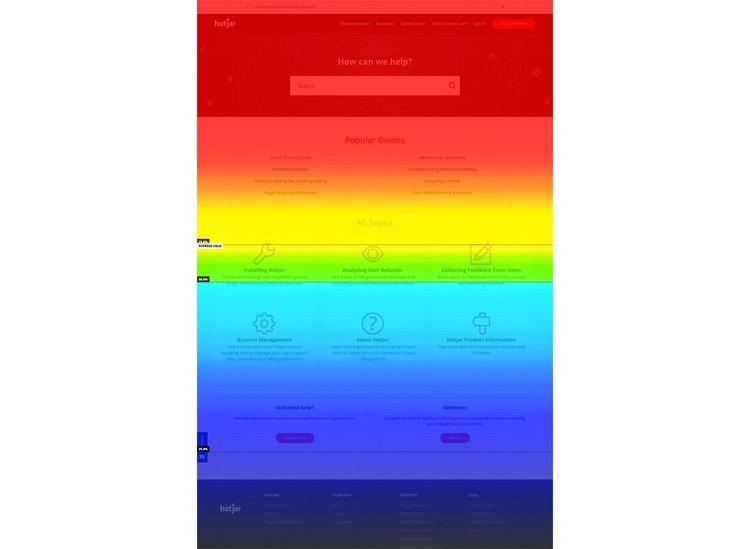
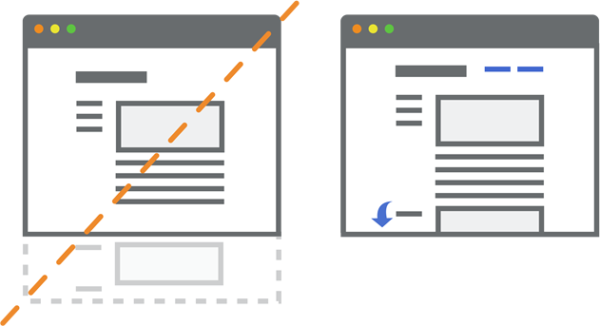
Click/heat maps
What if you get a ton of visitors that aren’t doing anything on your page other than spending time on site?
In that case, using average session duration as your micro conversion indicator could be misleading since no one is clicking anything on your page.
To track the click activity per PPC channel (even down to the keyword level), you can use a tool like Crazy Egg’s Confetti report.
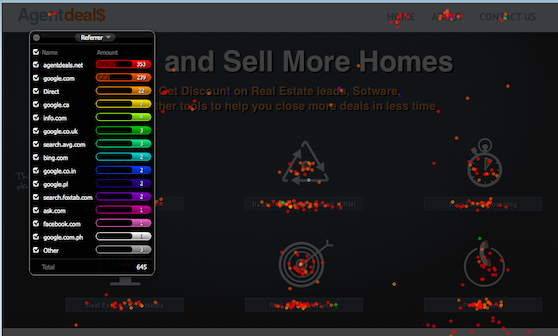
Filling out some form fields
What if all your other micro conversions are strong enough to get the visitor to start on the macro conversion?
This could mean that the last thing holding you back is the information you’re asking for in your form fields.
Use Hotjar to see if there are any friction points on your form (where people are getting stuck) and even how many seconds on average they take to fill out that specific field.
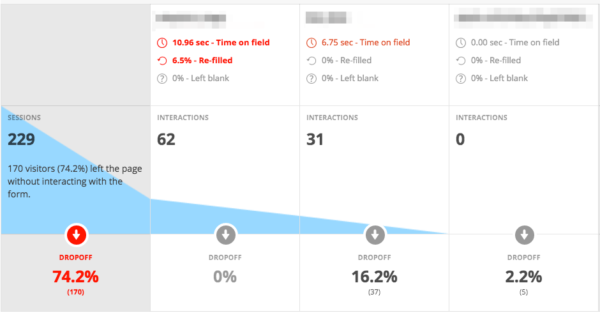
Checkout process fallout
One of the most common micro conversion tracking processes comes from the Google Analytics goal funnel.
Whether you have an eCommerce or SaaS product, you can see how many people continue on to the next step that ultimately leads to your macro conversion.
To set that up, you’ll want to follow these steps, which will eventually lead to a Google Analytics view like this:
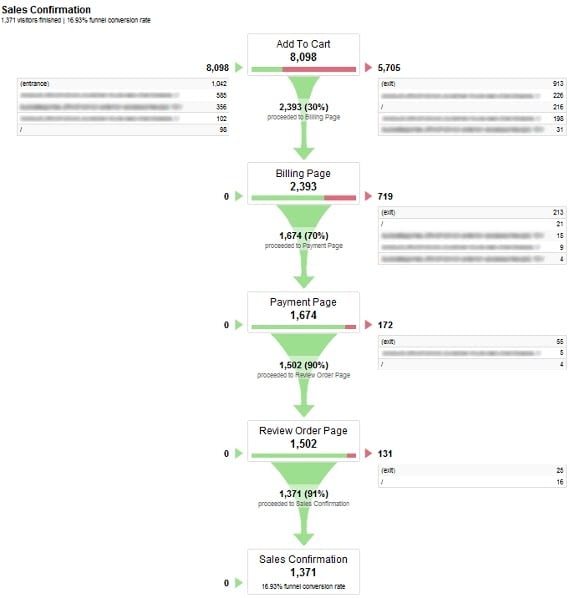
How do you track micro conversions?
If a new keyword, placement, ad group, or campaign isn’t getting any actual end/macro conversions, then micro conversions are your best bet to see if you’re moving in the right direction (or figure out why you’re not).
To start tracking micro conversions, you’ll want to set up some basic connections between your PPC accounts and your Google Analytics account.
Google Ads connects seamlessly with Google Analytics. For other PPC accounts though, you can use regular UTM parameters in your ad URLs to track specific campaigns and other variables.
My friend, Dan McGaw, and his team over at Effin Amazing, created the UTM Builder Chrome extension to use UTMs on the fly.
Beyond Google Analytics, tools like Hotjar and Crazy Egg track all the other important micro conversions that we can be actionable about.
Creating your own micro conversions
What if you wanted to track values that aren’t readily available?
Frederick Vallaeys and his team at Optmyzr, use something called cost-per-engaged-click (CPEC), which is a mix between time on site and bounce rate. You can use CPEC to prioritize focus on keywords that are more likely to turn into macro conversions.
In another example, well respected Google Ads pro, Brad Geddes, uses something called “profit per impression” which helps him get a more complete picture around testing. Profit per impression analyzes, if everything in Google Ads was equal, which test actually is the best performer.
Micro conversion & retargeting power
Using micro conversions to track your progress toward the macro conversion is one of the most useful ways you can take advantage of data, but it also helps you create some of the most engaged (and conversion-ready) retargeting audiences.
If you check out our massive post around different retargeting campaigns, a fast one to run creates audiences around minimum time on site.
Take this one step further by creating your own “engagement audiences.” Then, based on your specific data, showcase specific retargeting ads to help them get to the next micro conversion, or all the way across the succession of micro conversions that eventually lead to the final macro conversion.
Micro conversions for the macro conversion win
Now that you know that micro conversions lead up to your actual conversion, it’s important to clearly separate the two (micro vs macro).
Before you can expect your newly launched PPC campaign to gain macro conversion traction, pay close attention to the micro conversions and use that data to optimize for improved PPC performance.
Before you know it, you’ll have a series of micro conversions in your pocket, and you can shout backward to all your other awaiting conversions that it’s green light go 🙂
